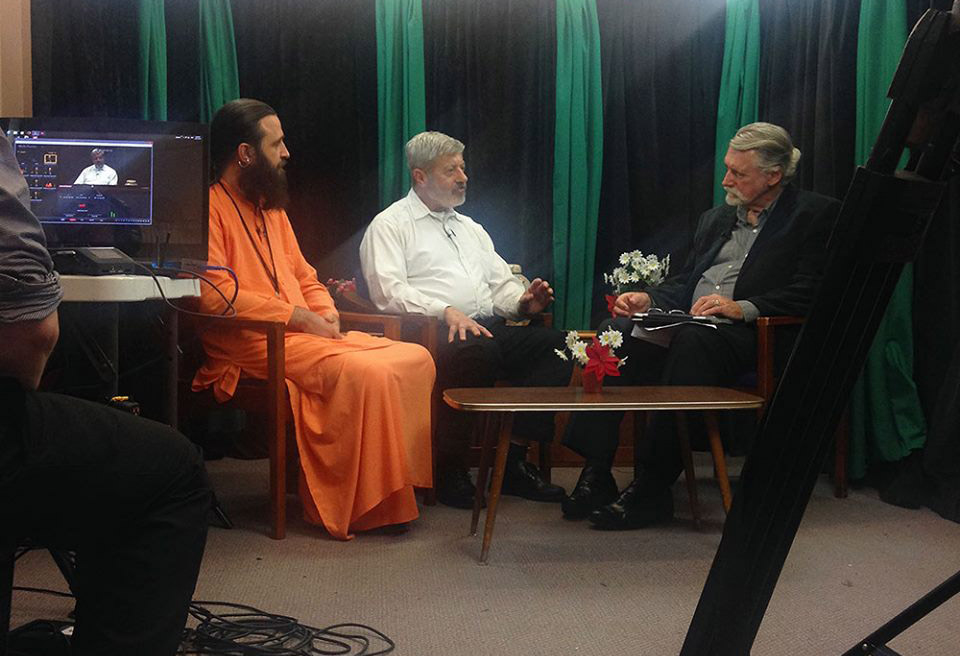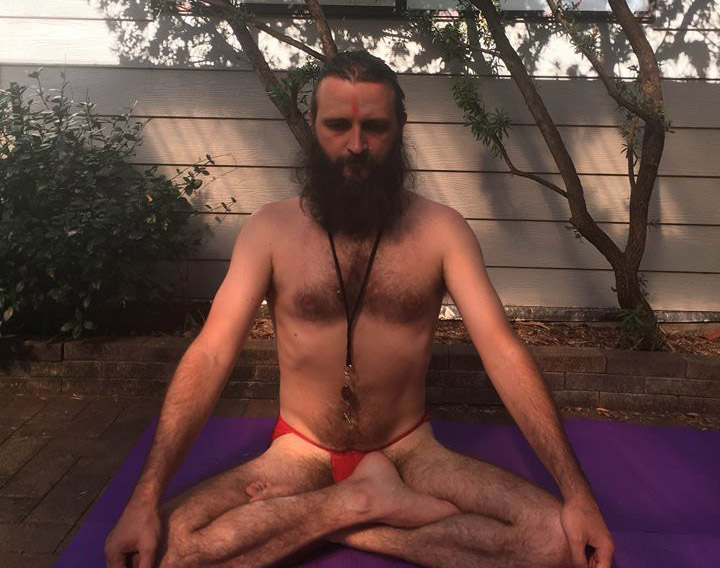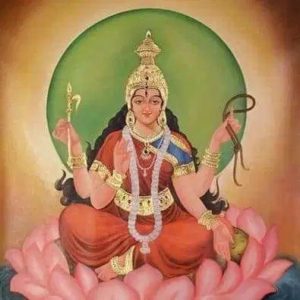I have already quoted from the Prapañcasāra-tantra (4.21). It says that the praṇava ‘Oṃ’ comes from the mantra ‘sohaṃ’. If there is no ‘sa’ and ‘ha’ in it, then ‘o’ remains, and with the bindu we get ‘Oṃ’.
सकारं च हकारं च लोपयित्वा प्रयोजयेत्।
संधिं वै पूर्वरूपाख्यं ततोऽसौ प्रणवो भवेत् ।।४.२१।।
sakāraṃ ca hakāraṃ ca lopayitvā prayojayet।
saṃdhiṃ vai pūrvarūpākhyaṃ tato’sau praṇavo bhavet ।।4.21।।
According to the pūrva-rūpa saṁdhi rule, removing ‘sa’ and also ‘ha’, definitely, one should definitely get that praṇava (Oṃ) from there.
The mantra ‘Oṃ’ is called ‘para-praṇava’. That means it is primordial, it is identified with the spontaneously arising vibration (anāhata). There are many interpretations of this mantra and one of them is that the spelling ॐ is a combination of three mātrā अ – उ – म् / a – u – m. Sometimes you can find other spellings, for example ओँ / om̐, which could be explained by grammar rules, according to which ओ / o is a combination of syllables अ – उ / a – u. So relatively speaking, we can say that all vowels fall into the range from अ / a to म् / m, which could also shift to anusvāra. According to the Parā-trīṃśikā-vivaraṇa, all vowels are associated with Śiva-tattva, and all consonants are associated with Śakti and all manifestations that emerge due to it (the remaining 35 tattvas). Sanskrit consonants are connected with all other tattvas, they end with ह / ha. Together, through the union of Śiva and Śakti, by means of kāma-kalā, they are apara–praṇava, known as अहं ‘aham’, which is the symbol of kāma-kalā.
Thus, aham is an abbreviation, in which all akṣaras of the Sanskrit alphabet and all 36 tattvas are contained. That is, ‘aham’ is Śiva himself with his Śakti and ‘viśva’ – all manifestations emerging from them, which are always contained in them at any stage of their unfolding. Saying ‘aham’ (Self), we kind of reveal the experience of ourselves as the whole universe, what both nāthas and tantrikas call piṇḍa–brahmāṇḍa-vada (the connection of microcosm and macrocosm). Different worlds of outer space are represented in our body, mainly in cakras.
So, we have two praṇavas, ‘para’ – is directly ‘Oṃ’, originating from sohaṃ, this is Śiva himself and the vowels of Śakti. And then, from the para–praṇava, the apara–praṇava manifests, in which the Sanskrit consonants and the remaining 35 tattvas unfold. When we repeat ‘sohaṃ’, or rather, we experience this phenomenon comprehensively, then we feel the identity of ourselves – अहं ‘aham’ with सः ‘sah’ (he). It can be associated with any deity or mantra associated with it. And ultimately, any mantra should lead to that experience, which is known as ‘ajapa-japa’.
There is also an inverted version of this mantra, known as हंसः ‘haṃsaḥ’. If translated literally, it means ‘swan’. Śaṅkara identifies a swan with the principle of the Sun, since it is a source of prāṇa, and the Sun, like a swan, moves through the sky. The Sun can touch a surface of the earth, its rays glide over it. The Sun rises and disappears with the sunset, and in the same way a swan can submerge under water and stay there, to be on and above water. If ‘sohaṃ’ is paramātmā, then ‘haṃsa’ is also a symbol of omnipresence, but rather, like ‘ātman’ (from the root ‘at’ – to move and spread, that is, ātman abides in everything). There is one famous mantra which is used in tantrism sometimes. It is quoted in the earliest Kaṭhopaniṣad, but initially it is found in the Rigveda, in the hymn to Dadhikar (the Sun).
The Rigveda (Maṇḍala 4.40.5)
हं॒सः शु॑चि॒षद्वसु॑रंतरिक्ष॒सद्धोता॑ वेदि॒षदति॑थिर्दुरोण॒सत् ।
नृ॒षद्व॑र॒सदृ॑त॒सद्व्यो॑म॒सद॒ब्जा गो॒जा ऋ॑त॒जा अ॑द्रि॒जा ऋ॒तं ॥
The swan [the Sun], which abides (षद् / ṣad) in the clear sky (शुचि / śuci), abides in air (वसु / vasu), in the middle atmosphere (अन्तरिक्ष / antarikṣa), in fire (होता / hotā), dwells in the center of the Vedic altar for agnihotra (वेदिषद् / vediṣad), in the guest* (अतिथि / atithi), staying at the house (दुरोणसत् / duroṇasat). Being in people (नृषद् / nṛṣad), in good beings (gods, siddhas) (वरसत् / varasat), in harmony with the world (a world order) (ऋतसत् / ṛtasat), who is in space (व्योमसत् / vyomasat), born under water अब्जा / abjā (वडवानल / vaḍavānala – fire within the ocean), born from the Sun (गो / go) (जा / jā – sunlight). The one who was born from the perfect world order (ऋतजा / ṛtajā), born on the mountains** (अद्रिजा / adrijā), the basis of the world order (ऋतं / ṛtaṃ), the great one from whom the whole universe emerges (बृ्हत् / bṛhat).
Explanation of terms:
* Guests in India are identified with the gods and vice versa, the gods are invoked during a pūjā into the space of the rite, therefore they are also ‘guests’.
** ‘Who is born on the mountains’ – could have many meanings; adri could mean ‘cloud’, the Sun, ‘mountain’, clouds covering a mountain, something related to the number seven. I believe that we are talking about seven sacred rivers, the worship of which is present in all pūjās, they all descend from heaven, these are heavenly rivers, symbols of nectar (amṛta).
Based on this hymn, we can better understand the significance of the ‘haṃsa’ symbol.









